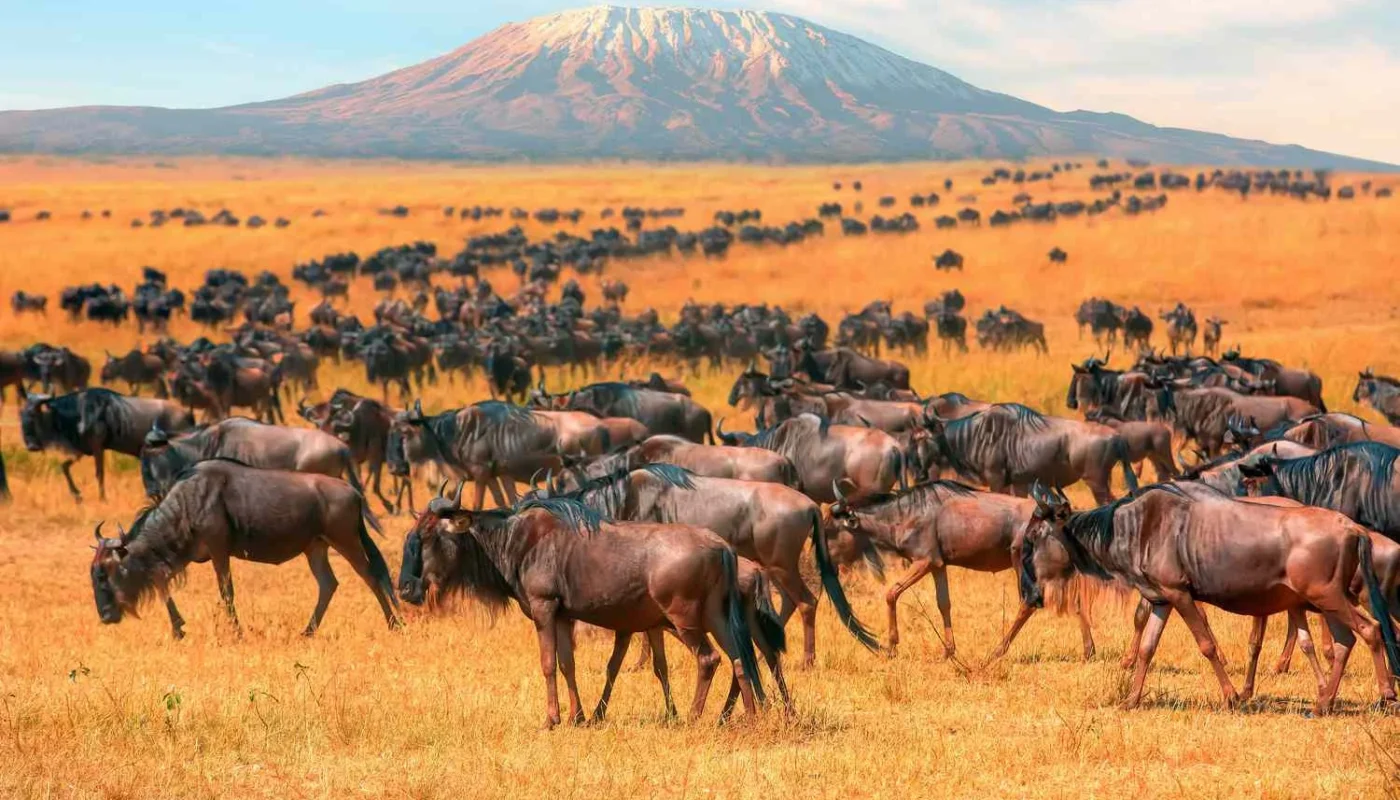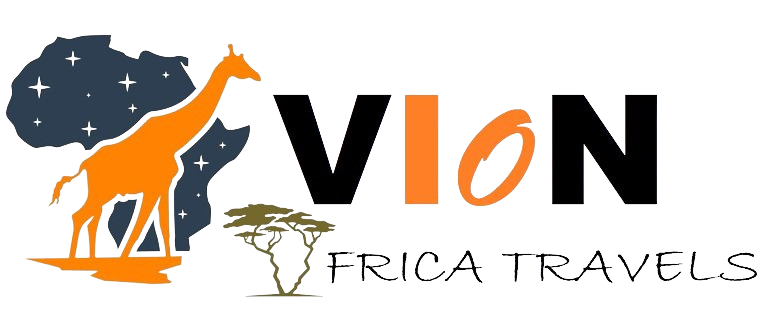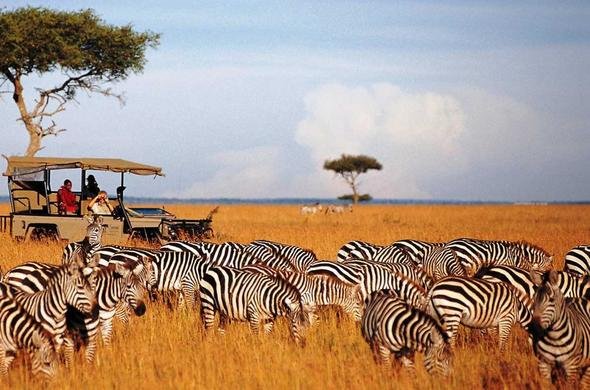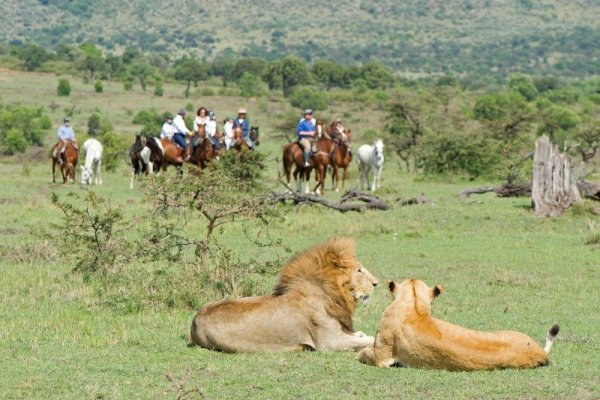Africa is home to some of the most breathtaking wildlife destinations in the world, and two names that stand out in the realm of safari adventures are the Masai Mara National Reserve in Kenya and the Serengeti National Park in Tanzania. Both parks are famous for their rich wildlife, incredible landscapes, and the annual Great Migration, but which one is right for you? This comprehensive guide compares the two iconic parks, helping you make an informed decision about your next African safari adventure.
1. Overview of Masai Mara National Reserve and Serengeti National Park
Masai Mara National Reserve
The Masai Mara National Reserve lies in the southwest of Kenya and is part of the Greater Serengeti Ecosystem. The reserve is named after the Maasai people who inhabit the area and the Mara River, which runs through the park. Covering approximately 1,510 square kilometers (580 square miles), the Mara is home to an abundance of wildlife and is renowned for its predator sightings, particularly lions, leopards, and cheetahs. It’s also a key destination for witnessing the Great Migration, where over 1.5 million wildebeest, zebras, and other herbivores cross into the Mara from the Serengeti.
Serengeti National Park
The Serengeti National Park, one of Tanzania’s most famous attractions, spans 14,750 square kilometers (5,700 square miles). This vast expanse of savannah, dotted with acacia trees and punctuated by kopjes (rocky outcrops), is home to some of the world’s most iconic wildlife experiences. The Serengeti is known for its high concentration of predators and hosts the largest terrestrial mammal migration in the world—the Great Migration. While it shares much of its ecosystem with the Masai Mara, the Serengeti offers diverse landscapes, ranging from endless grasslands to riverine forests.
2. Wildlife Experiences: Which Destination Offers More?
Masai Mara Wildlife
The Masai Mara is particularly known for its big cat sightings. If you’re hoping to catch a glimpse of lions, cheetahs, and leopards in action, the Mara is an excellent choice. The Mara’s open plains and relatively small size make it easier to spot predators. The Mara River is also one of the most famous sites for witnessing dramatic river crossings during the migration, where wildebeests battle crocodiles as they attempt to cross the waters. Besides the Big Five (lion, leopard, elephant, buffalo, and rhino), visitors can also spot giraffes, zebras, hippos, and numerous bird species.
Serengeti Wildlife
The Serengeti, with its expansive size and diverse ecosystems, offers an unparalleled variety of wildlife. In addition to the Big Five, you’ll encounter a wide range of herbivores, such as zebras, gazelles, and impalas. One of the Serengeti’s biggest draws is the opportunity to see the Great Migration throughout the year. Unlike the Mara, where migration is a seasonal event, the migration in the Serengeti is a year-round phenomenon, as animals move across different parts of the park. The Serengeti is also home to vast herds of elephants and larger populations of predators.
Verdict: If you’re a fan of big cats, the Masai Mara might be the ideal choice. However, for a more diverse wildlife experience and to witness the Great Migration at different stages throughout the year, the Serengeti takes the crown.
3. Scenic Beauty and Landscape Differences
Masai Mara Landscape
The Masai Mara is characterized by open savannahs and rolling hills. Its landscape is relatively flat, allowing for excellent visibility of wildlife. The Mara River, with its lush banks, offers a striking contrast to the dry plains, especially during the migration season. Sunrises and sunsets over the plains are awe-inspiring, as the golden light illuminates the endless horizon.
Serengeti Landscape
The Serengeti boasts more diverse landscapes. The southern plains, which are vast and open, contrast with the northern woodlands and river areas. The central Serengeti is marked by acacia trees and kopjes, where lions and other predators often perch, giving visitors the quintessential African savannah experience. The Grumeti River in the western corridor provides a lush landscape with dense forests and water sources that attract wildlife. Each part of the Serengeti offers a unique scenic view, from expansive grasslands to rocky outcrops, making it a more visually diverse destination than the Mara.
Verdict: For travelers seeking diverse landscapes, the Serengeti offers more variety. However, if you prefer vast, open plains and the iconic “Out of Africa” scenery, the Masai Mara won’t disappoint.
4. Best Time to Visit: When to Go for Prime Safari Experiences
Masai Mara Peak Season
The best time to visit the Masai Mara is during the dry season, from July to October. This period coincides with the Great Migration, particularly the dramatic river crossings at the Mara River. Wildlife is easier to spot as animals gather around water sources. However, this is also the peak tourist season, so expect more crowds and higher prices for lodges and camps.
Serengeti Peak Season
The Serengeti’s peak season is also during the dry months of June to October, but the park’s vastness means that visitors are more spread out, offering a less crowded experience. The migration is present year-round in different parts of the Serengeti, with calving season occurring from January to March in the southern plains. The Serengeti also offers excellent wildlife viewing during the shorter dry season from December to February.
Verdict: Both parks offer fantastic wildlife experiences during the dry season. However, the Serengeti’s year-round migration and its larger size give it the advantage of having incredible safari experiences regardless of when you visit.

5. Accessibility: How Easy Is It to Get There?
Getting to the Masai Mara
The Masai Mara is relatively easy to access, especially from Nairobi, Kenya’s capital. There are daily flights from Nairobi to various airstrips in the Mara, and the flight takes about 45 minutes. Alternatively, you can opt for a 4-5 hour drive from Nairobi to the reserve.
Getting to the Serengeti
Accessing the Serengeti can be a bit more complex, especially if you’re traveling from abroad. Most visitors fly into Kilimanjaro International Airport near Arusha, Tanzania, and then take a short domestic flight to one of the Serengeti’s airstrips. There is also the option to drive, but it can take up to 8 hours to reach the park from Arusha.
Verdict: The Masai Mara is easier and quicker to access, especially for those traveling from Nairobi. The Serengeti requires more planning, but the journey offers a chance to explore other nearby attractions in Tanzania.
6. Accommodation Options: Where Will You Stay?
Masai Mara Lodging
The Masai Mara offers a wide range of accommodation options, from luxury tented camps to budget-friendly lodges. Many camps are located within or near the reserve, offering easy access to prime game-viewing areas. The intimate, luxury camps provide all-inclusive packages, including game drives, meals, and guided tours.
Serengeti Lodging
The Serengeti also has a wide variety of lodging options, ranging from luxury lodges to mobile tented camps that move with the migration. Some camps are located in more remote areas, offering exclusive game-viewing experiences. The mobile camps, in particular, offer a unique way to stay close to the migration without compromising on comfort.
Verdict: Both the Masai Mara and Serengeti provide excellent accommodation options, but the Serengeti’s mobile camps add an extra layer of adventure and proximity to the wildlife migration.
7. Unique Experiences: What Sets Each Park Apart?
Masai Mara Unique Experiences
One of the Masai Mara’s unique offerings is the opportunity to experience the rich culture of the Maasai people. Visitors can take guided tours of Maasai villages to learn about their traditions, customs, and way of life. Another highlight is the chance to witness the Great Migration river crossings at the Mara River, where dramatic scenes of survival unfold.
Serengeti Unique Experiences
The Serengeti offers a range of unique experiences, including hot air balloon safaris, where you can float above the plains at sunrise and witness wildlife from a bird’s eye view. The Grumeti River crossings are also a unique aspect of the migration that is less frequently visited than the Mara River crossings, offering a quieter, more intimate experience.
Verdict: Both parks offer unique experiences that go beyond traditional game drives, but the Serengeti’s hot air balloon safaris and quieter migration scenes provide something truly special.
8. Costs: Which Destination Offers Better Value?
Masai Mara Costs
Safaris in the Masai Mara can be expensive, especially during peak migration season. Luxury camps and lodges can charge premium rates, and park fees also add to the overall cost. However, due to its smaller size and accessibility, visitors can save on travel costs compared to the Serengeti.
Serengeti Costs
The Serengeti tends to be more expensive due to its size and remote locations. Park fees, internal flights, and longer durations in the park add to the cost. However, the Serengeti’s range of experiences and wildlife encounters may justify the higher expense for many travelers.
Verdict: The Masai Mara is slightly more affordable, but the Serengeti offers a broader range of experiences for those willing to invest more in their safari adventure.
Conclusion: Which Safari Destination Is Right for You?
Choosing between the Masai Mara National Reserve and Serengeti National Park ultimately depends on your preferences. If you’re looking for easy access, exceptional predator sightings, and a chance to witness the dramatic Mara River crossings, the Masai Mara may be your best bet. On the other hand, if you crave a more diverse landscape, year-round migration opportunities, and unique experiences like hot air balloon safaris, the Serengeti could be the perfect choice.
Regardless of your decision, both the Masai Mara and Serengeti offer some of the world’s most spectacular wildlife encounters, ensuring an unforgettable African safari experience.


